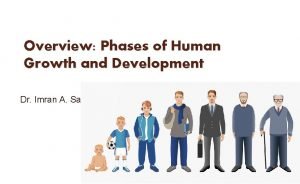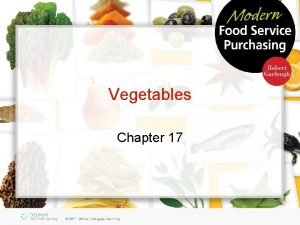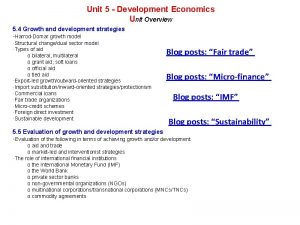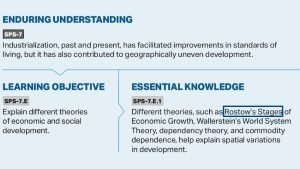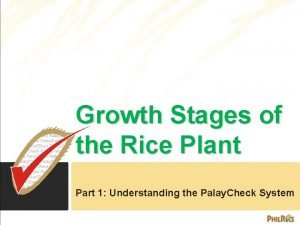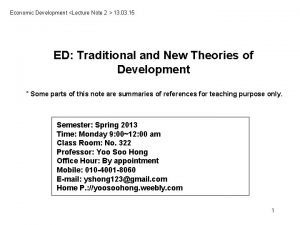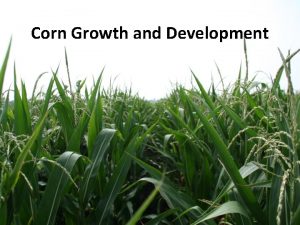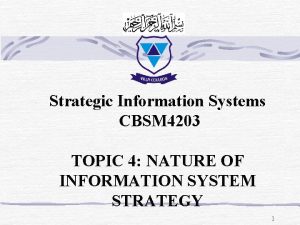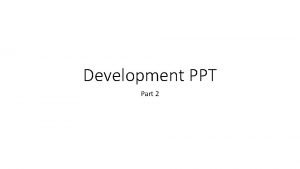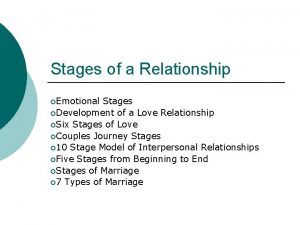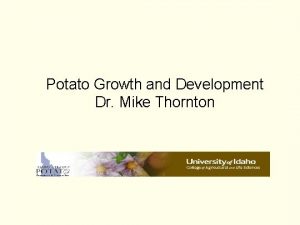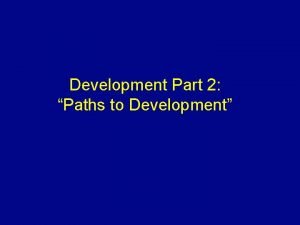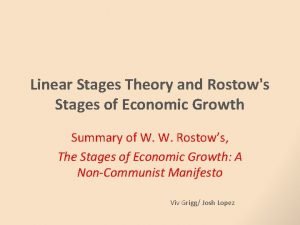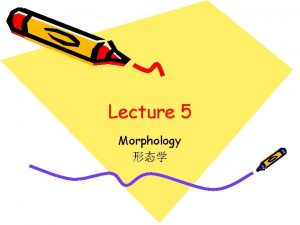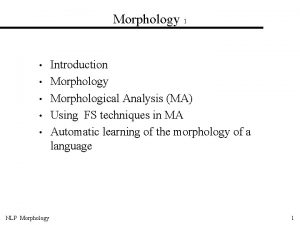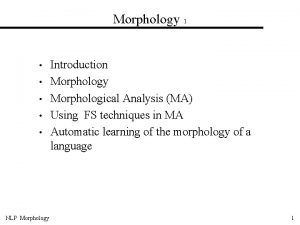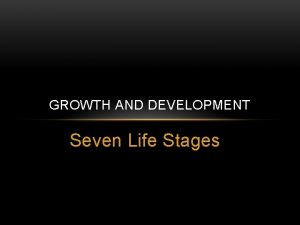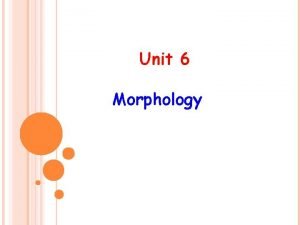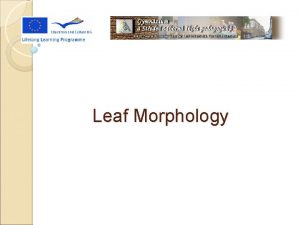MODULE 5 Morphology and Growth Stages of the



















































- Slides: 51

MODULE 5 Morphology and Growth Stages of the Rice Plant 03. 12. 202 0 1

Why do we need to know the rice plant? • To identify the different parts of the rice plant; and • Name the growth phases and stages of the rice plant 03. 12. 202 0 2

Topics included in this course • Different parts of a rice plant • Three growth phases of the rice plant and the corresponding duration of each • Growth stages of the rice plant 03. 12. 202 0 3

Lesson 1 The Different Parts of a Rice Plant 03. 12. 202 0 Source: http: //www. nzdl. org/ 4

Learning Outcome & Content • Identify the different parts of the rice plant http: //world-crops. com/taxonomy/ 03. 12. 202 0 5

Seed (germinating seed) 03. 12. 202 0 6

Seedling 03. 12. 202 0 7

Tiller 03. 12. 202 0 8

Leaf The Blast disease manifest at the collar. 03. 12. 202 0 9

Leaf Varieties differ in leaves. Hybrid varieties have wider leaves than the inbred. 03. 12. 202 0 10

Leaf The flag leaf supplies photosynthetic products to the panicle. Hybrid has wider flag leaves than the inbred varieties. 03. 12. 202 0 11

Culm 03. 12. 202 0 12

Culm 03. 12. 202 0 13

Panicle & Spikelets 03. 12. 202 0 14

Spikelets and grains are the same. 03. 12. 202 0 15

Floret Some varieties have awns. Breeders remove awns when they breed new varieties. 03. 12. 202 0 16

Flower 03. 12. 202 0 17

Flower 03. 12. 202 0 18

Flower 03. 12. 202 0 19

Roots 03. 12. 202 0 20

Rice Grain 03. 12. 202 0 21

Rice Grain 03. 12. 202 0 22

Weed or Rice ? 03. 12. 202 0 23

Lesson 2 Growth Phases of the Rice Plant and Corresponding Duration of Each 03. 12. 202 0 24

Learning Outcomes After the lesson, the participants are expected to: 1. Enumerate the growth phases of the rice plant; and 2. Identify the duration of each growth phases of the rice plant. 03. 12. 202 0 25

Structure • Growth phases of the rice plant o Vegetative o Reproduction o Ripening • Duration of each growth phase 03. 12. 202 0 Source: Screen grab on IRRI Youtube Channel. 26

03. 12. 202 0 27

03. 12. 202 0 28

03. 12. 202 0 29

03. 12. 202 0 30

For example 03. 12. 202 0 31

Lesson 3 Growth Stages of the RICE PLANT 03. 12. 202 0 32

Learning Outcomes After the lesson, the participants are expected to: 1. Name the growth stages of the rice plant; and 2. Cite their respective durations. 03. 12. 202 0 33

Structure • Study / review the growth stages of the rice plant; and • Look at the respective durations of each growth stages. 03. 12. 202 0 34

Stages in the VEGETATIVE PHASE 03. 12. 202 0 35

Stage 0 Germination to emergence • Embryo starts to germinate • Variety, temperature, water and air affects growth • End of stage 0: 3 DAS first leaf appears 03. 12. 202 0 36

Stage 1 Seedling • Leaves continue to develop at the rate of 1 every 3 -4 days during the early stage. • Secondary adventitious roots replace the temporary radicle. • 20 to 25 -day-old seedling ready for transplanting. 03. 12. 202 0 37

Stage 2 Tillering • Tillers displace a leaf as they grow and develop • Extends from first tiller to maximum tillering • At maximum tiller stage, some tillers die or level off 03. 12. 202 0 38

Stage 3 Stem elongation • Begins before panicle initiation in late-maturing varieties • In short-duration varieties, stem elongation and panicle initation occur simultaneously. 03. 12. 202 0 39

Stages in the REPRODUCTIVE STAGE 03. 12. 202 0 40

Panicle at 7 -10 days after initiation 03. 12. 202 0 Stage 4 Panicle initiation to booting • Begins with panicle primordium initiation at the tip of growing shoot • End of stage 4: young panicle is ‘Pagbubuntis’ about emerge You may get ato shoot and open it, showing the spikelets, to know if • Spikelets become seedling is at booting stage distinct. (nagbubuntis) 41

Stage 5 Heading • ‘Head’ of the grain shows up • 50% of the panicles have exerted • Usually takes 10 -14 days for all plants to complete heading 03. 12. 202 0 42

Stage 6 Flowering • • 03. 12. 202 0 ‘Anthesis’-- flowering At flowering, the florets open, anthers protrude, pollen is shed florets then close Occurs about 25 days after visual panicle initiation Plant is most sensitive to stress 43

Stages in the RIPENING STAGE 03. 12. 202 0 44

Stage 7 Milk grain 03. 12. 202 0 § The grain starts to fill with a white milky liquid that can be squeezed out. § The top of the panicle bends gently in an arc. § The panicle and the 3 uppermost leaves are green 45

Stage 8 Dough grain 03. 12. 202 0 • Noticeable changes: yellow spikelets remaining leaves dry up senescence 46

Stage 9 Mature grain 03. 12. 202 0 Grains are fully developed, mature, golden yellow, and hard • Most of the upper leaves are dry and the panicles bent down • 47

Conclusions • Do quick assessment via “pass the ball exercise” • Review learning outcomes • Solicit questions from participants • Summarize the key points • Congratulate and ask the participants how to apply what they have learned. 03. 12. 202 0 48

Conclusions ACKNOWLEDGMENT: IRRI, Phil. Rice 03. 12. 202 0 49

Thank you ! 03. 12. 202 0 50

For more information, please contact: Dr. Aurora M. Corales Phil. Rice Focal Person – BRIA FARMERS amcorales@yahoo. com http: //www. philrice. gov. ph Mr. Matthias Radek Chief Advisor GIZ Agriculture-DPP Projects matthias. radek@giz. de http: //www. better-rice-initiative-asia. org/ 03. 12. 202 0 Credit Philippine Rice Research Institute 51
 Growth stages of rice
Growth stages of rice 8 inflectional morphemes
8 inflectional morphemes Relative growth rate equation
Relative growth rate equation Ground tissue
Ground tissue Primary growth and secondary growth in plants
Primary growth and secondary growth in plants Primary growth and secondary growth in plants
Primary growth and secondary growth in plants Stages of human growth and development pictures
Stages of human growth and development pictures Human growth and development
Human growth and development Social development in adulthood
Social development in adulthood Stages of growth
Stages of growth 6 life stages
6 life stages Growthchain
Growthchain Geometric growth vs exponential growth
Geometric growth vs exponential growth Neoclassical growth theory vs. endogenous growth theory
Neoclassical growth theory vs. endogenous growth theory Organic vs inorganic growth
Organic vs inorganic growth C device module module 1
C device module module 1 Feekes growth stages
Feekes growth stages Fruit used as vegetable
Fruit used as vegetable Harrod domar model economics
Harrod domar model economics Soybean growth stages
Soybean growth stages Rostows stages of development
Rostows stages of development A life cycle of a tiger
A life cycle of a tiger Stages of palay
Stages of palay Five stages of economic growth
Five stages of economic growth V1 corn
V1 corn Basic hair structure
Basic hair structure 4 stages of spiritual growth
4 stages of spiritual growth Nolan's stages of growth model
Nolan's stages of growth model Models of global sustainable development ppt
Models of global sustainable development ppt Modernisation theory
Modernisation theory 6 relationship stages
6 relationship stages What are the stages of potato growth
What are the stages of potato growth Rostow's 5 stages of growth
Rostow's 5 stages of growth Rostows theory
Rostows theory Hình ảnh bộ gõ cơ thể búng tay
Hình ảnh bộ gõ cơ thể búng tay Ng-html
Ng-html Bổ thể
Bổ thể Tỉ lệ cơ thể trẻ em
Tỉ lệ cơ thể trẻ em Voi kéo gỗ như thế nào
Voi kéo gỗ như thế nào Glasgow thang điểm
Glasgow thang điểm Chúa yêu trần thế
Chúa yêu trần thế Môn thể thao bắt đầu bằng chữ đua
Môn thể thao bắt đầu bằng chữ đua Thế nào là hệ số cao nhất
Thế nào là hệ số cao nhất Các châu lục và đại dương trên thế giới
Các châu lục và đại dương trên thế giới Công của trọng lực
Công của trọng lực Trời xanh đây là của chúng ta thể thơ
Trời xanh đây là của chúng ta thể thơ Cách giải mật thư tọa độ
Cách giải mật thư tọa độ Làm thế nào để 102-1=99
Làm thế nào để 102-1=99 Phản ứng thế ankan
Phản ứng thế ankan Các châu lục và đại dương trên thế giới
Các châu lục và đại dương trên thế giới Thể thơ truyền thống
Thể thơ truyền thống Quá trình desamine hóa có thể tạo ra
Quá trình desamine hóa có thể tạo ra







